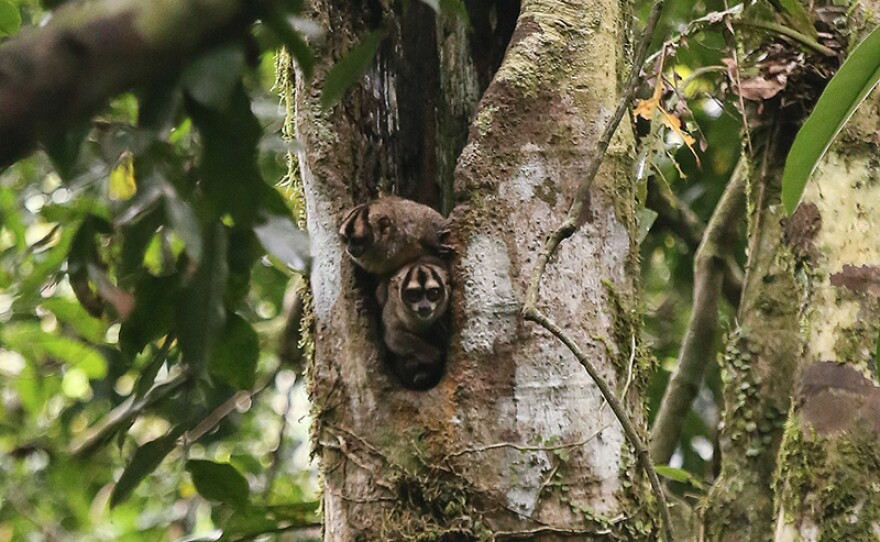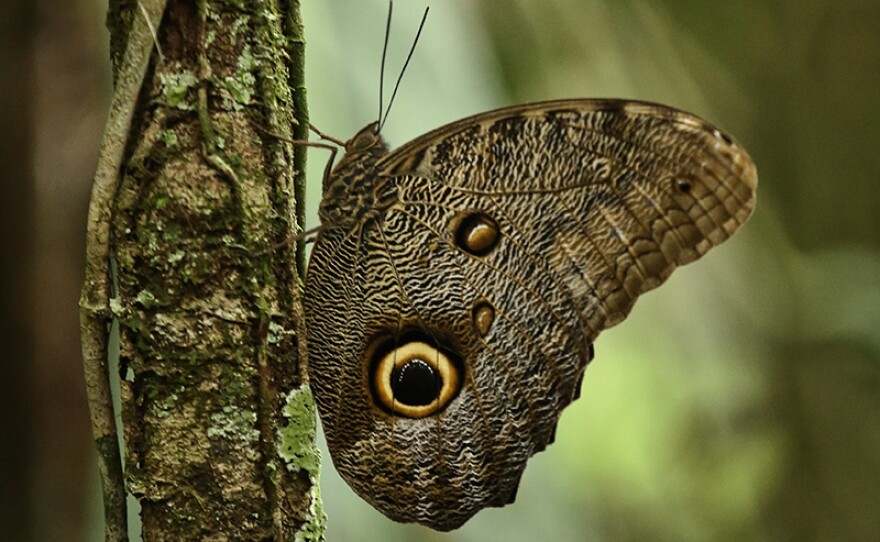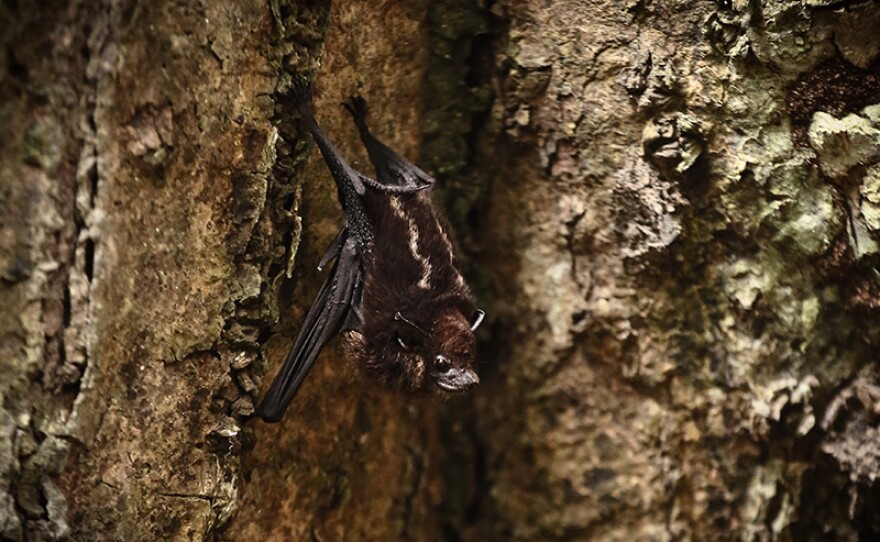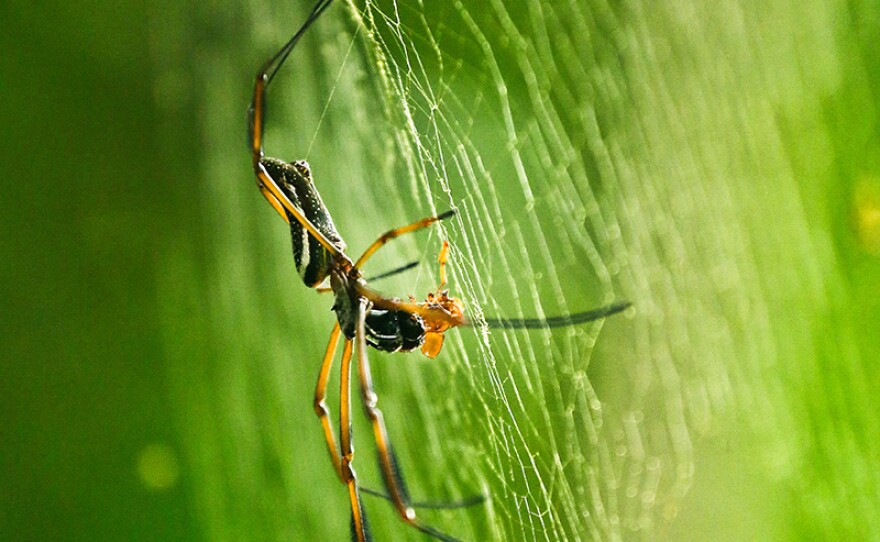Wednesday, July 19, 2023 at 8 p.m. on KPBS TV / Stream now with KPBS Passport!
—Go undercover in the untouched Amazon jungle to meet some of the most incredible creatures on Earth—
In Ecuador’s Amazon basin lies a special patch of jungle that is a living, breathing, green metropolis of life. It is an untouched, secluded wilderness teeming with biodiversity, only accessible by boat. Follow a team of naturalists and filmmakers on a mission to capture the intimate behaviors of the wildlife who dwell here by installing a network of more than 50 remotely operated cameras and mini-cams, from the dark rainforest floor right up to a tangled canopy 300 feet in the air.
By filming 24/7 for an entire month, the camera crew captures the lives of exotic creatures and discovers the incredible tricks these animals use to survive in the extreme jungle climate. From agile pygmy marmosets and boisterous howler monkeys, to solitary pumas and mesmerizing leaf-cutter ants, meet a cast of remarkable animal characters carving out a living in this tropical world on NATURE "Undercover In The Jungle."

Featured Creatures:
- Woolly monkey
- Collared peccary
- Jaguar
- Pygmy marmoset
- Red Howler monkey
- Night monkey
- Equatorial Saki monkey
- Ecuadorian Sac-winged bat
- Vulture
- Lemon ant
- Spider monkey
- Yellow-footed tortoise
- Various butterfly species

Noteworthy Facts:
- A single hectare (about 2.5 acres) in the Amazon jungle contains more tree species than the entire United States and Canada combined, as well as more than 100,000 species of insect.
- Peccaries are the surprising source of life for many species in the jungle. The mud wallows they create when they feed on the jungle floor become a source of nutrients for a variety of wildlife, including guans, curassow, turtles and deer.
- Infrared cameras show how round-eared bats flip 180 degrees mid-air and reverse into position in order to dangle on the roof of their jungle cave. Their bizarre leaf-shaped noses focus and amplify their chirping echolocation calls, which work like sonar technology, into a narrow beam. This super-sense allows them to navigate in the dark and locate potential dangers.

Buzzworthy Moments:
- Writer/director Will Benson and his filmmaking team journey for four days to get to the heart of the rainforest, bringing more than 50 cameras that take a week to rig throughout the jungle. The crew’s endurance is pushed to the limit during the month they are filming, whether through extreme weather, pestering insects or long shifts to keep the cameras running 24/7.
- The Amazon basin hosts nine unusual species of monkeys. Witness the antics of a pygmy marmoset, the smallest monkey in the world that can leap over 30 times its body length from tree to tree. Nocturnal night monkeys are captured by the cameras’ infrared lights as they hunt for insects and fruit. Saki monkeys hide out at the top layer of treetops while Spider monkeys leave the safety of the trees to drink from the forest floor’s mud wallows. Howler monkeys consume whole clumps of clay to sustain their diet, and muscular Woolly monkeys are seen using their tails to help make death-defying leaps from branch to branch in search of the juiciest fruits.
- See butterflies feast on the tears of an ever-patient turtle. These animals have a surprising symbiotic relationship. The salty moisture around a turtle’s eyes and nose contains a large amount of sodium that butterflies crave.
Watch On Your Schedule:
This episode is currently available to stream on demand with KPBS Passport, a benefit for members at $60 or more yearly, using your computer, smartphone, tablet, Roku, AppleTV, Amazon Fire or Chromecast. Learn how to activate your benefit now.
Join The Conversation:
NATURE is on Facebook + Instagram + @PBSNature on Twitter #NaturePBS

CREDITS:
NATURE is a production of THIRTEEN PRODUCTIONS LLC for WNET and PBS. For NATURE, Fred Kaufman is executive producer, Bill Murphy is series producer and Janet Hess is series editor. “Undercover In The Jungle” is a production of Atlantic Productions Limited and THIRTEEN PRODUCTIONS LLC for WNET and FremantleMedia Limited. The documentary is written, directed and presented by Will Benson, and produced by Anthony Geffen. Robin Cox served as director of photography and Sarjit Bains as editor.





